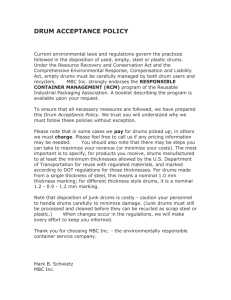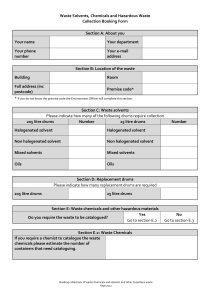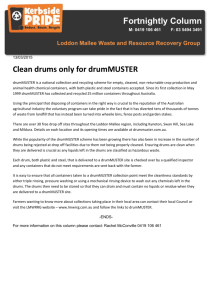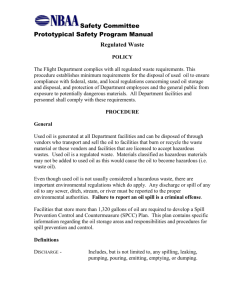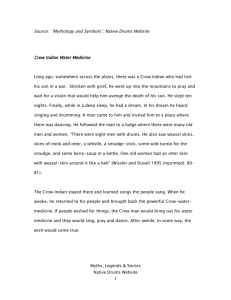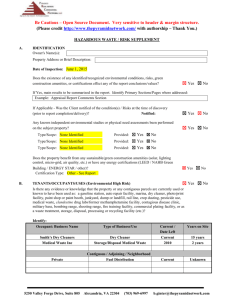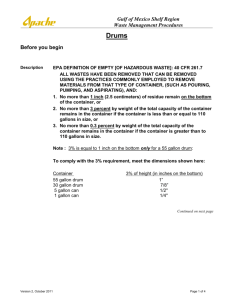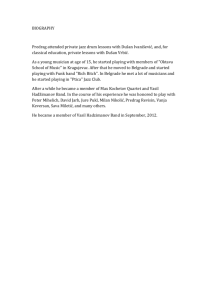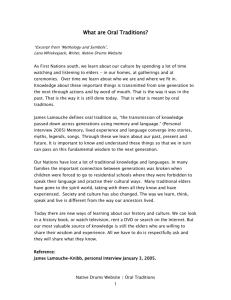WorkCover NSW
advertisement
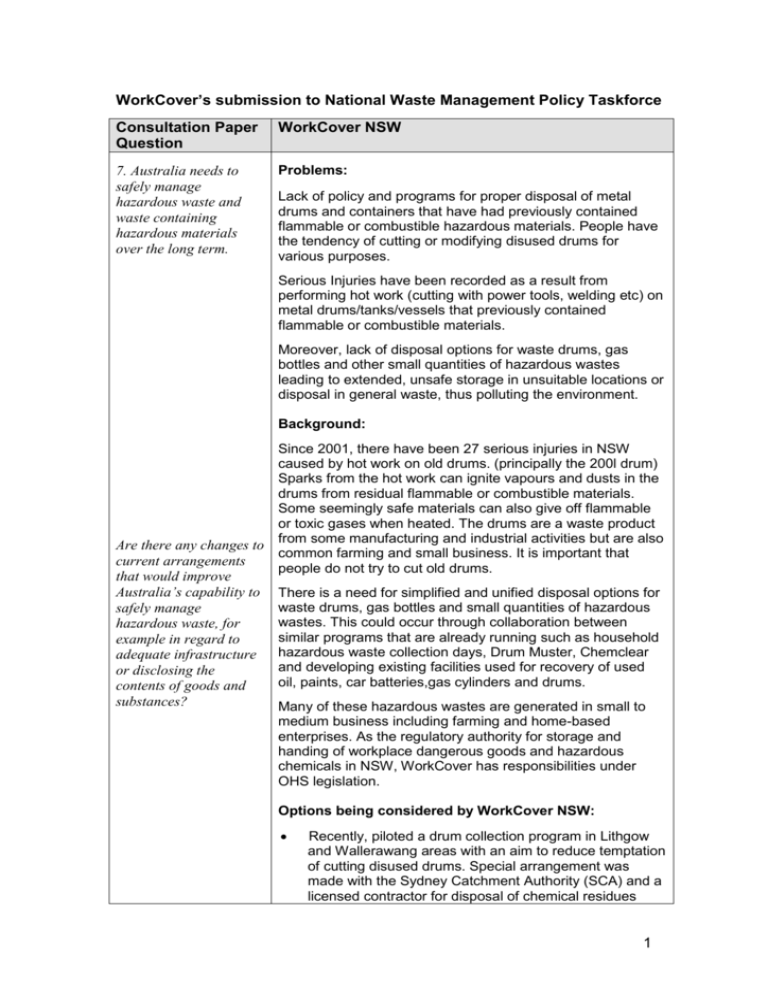
WorkCover’s submission to National Waste Management Policy Taskforce Consultation Paper Question WorkCover NSW 7. Australia needs to safely manage hazardous waste and waste containing hazardous materials over the long term. Problems: Lack of policy and programs for proper disposal of metal drums and containers that have had previously contained flammable or combustible hazardous materials. People have the tendency of cutting or modifying disused drums for various purposes. Serious Injuries have been recorded as a result from performing hot work (cutting with power tools, welding etc) on metal drums/tanks/vessels that previously contained flammable or combustible materials. Moreover, lack of disposal options for waste drums, gas bottles and other small quantities of hazardous wastes leading to extended, unsafe storage in unsuitable locations or disposal in general waste, thus polluting the environment. Background: Since 2001, there have been 27 serious injuries in NSW caused by hot work on old drums. (principally the 200l drum) Sparks from the hot work can ignite vapours and dusts in the drums from residual flammable or combustible materials. Some seemingly safe materials can also give off flammable or toxic gases when heated. The drums are a waste product from some manufacturing and industrial activities but are also Are there any changes to common farming and small business. It is important that current arrangements people do not try to cut old drums. that would improve Australia’s capability to There is a need for simplified and unified disposal options for waste drums, gas bottles and small quantities of hazardous safely manage wastes. This could occur through collaboration between hazardous waste, for similar programs that are already running such as household example in regard to adequate infrastructure hazardous waste collection days, Drum Muster, Chemclear and developing existing facilities used for recovery of used or disclosing the oil, paints, car batteries,gas cylinders and drums. contents of goods and substances? Many of these hazardous wastes are generated in small to medium business including farming and home-based enterprises. As the regulatory authority for storage and handing of workplace dangerous goods and hazardous chemicals in NSW, WorkCover has responsibilities under OHS legislation. Options being considered by WorkCover NSW: Recently, piloted a drum collection program in Lithgow and Wallerawang areas with an aim to reduce temptation of cutting disused drums. Special arrangement was made with the Sydney Catchment Authority (SCA) and a licensed contractor for disposal of chemical residues 1 from the collected drums. Don’t Cut Drums - education campaign to raise awareness of the hazards and risks of stockpiling and performing hot works on drums Periodic drum collection drives in conjunction with Drum Muster and household hazardous waste collection days. A pick-up service for larger stockpiles of drums. Developing existing facilities for recovery of low risk profile hazardous wastes such as used oil, paints, car batteries drums and gas cylinders In recognition of the environmental impacts associated with the storage and handling of old drums WorkCover is exploring alliances with catchment authorities and local government. A grant application is being prepared for funding from NSW Environmental Trust to expand drum collection program and fund the removal of hazardous substances from drums. Preferred Longer Term Solutions: WorkCover is currently developing linkages with Drum Muster and household hazardous waste collection days in relation to Don’t Cut Drums project. This process would be assisted if the federal government adopted a broader policy position to streamline and simplify the range of disposal options for metal drums, gas bottles and other small quantities of hazardous wastes. Metal drums and gas bottles should be defined as containers so that any future stewardship programs for containers will capture drums and gas bottles. 2

